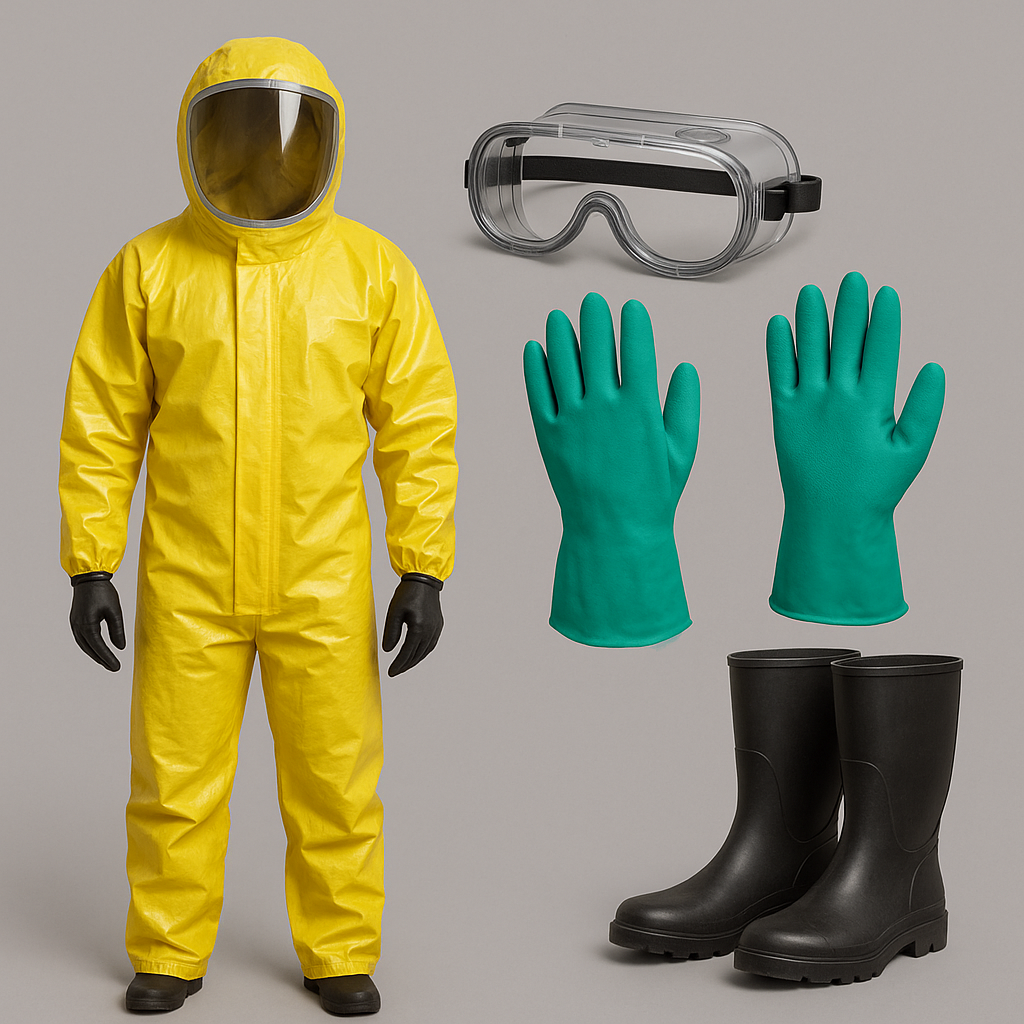Chemical protective clothing is a type of personal protective equipment (PPE) specifically designed to safeguard workers against hazardous chemicals in liquid, gas, or vapor form. These garments are critically important for personnel working in the chemical industry, pharmaceutical production, paint manufacturing, cleaning services, laboratory environments, and civil defense units.
Purpose of Use and Associated Risks
Exposure to chemicals can lead to severe health problems such as skin burns, irritation, allergic reactions, and systemic toxicity. Substances like acids (e.g., sulfuric acid, hydrochloric acid), bases (e.g., sodium hydroxide), solvents (e.g., toluene, acetone), and pesticides can be absorbed through the skin and affect internal organs. Therefore, chemical protective clothing is designed to fully prevent direct contact between the body and hazardous chemicals.
Technical Characteristics
The specific properties of chemical protective clothing vary depending on the type of substance and exposure environment:
- Material Composition: These garments are typically made from specialized synthetic materials such as polyethylene (PE), polypropylene (PP), PVC, butyl rubber, neoprene, or Tyvek®. These materials are coated or laminated to prevent chemical penetration.
- Sealing: Seams are sealed with heat welding or protective tape to ensure impermeability to liquids and gases.
- Hood and Glove Integration: Openings around the head, hands, and feet are tightly closed using elastic or drawstring systems; some models feature integrated gloves and boots.
- Ventilation: For extended use, systems allowing breathability or air circulation can be integrated to minimize heat stress.

Chemical Protective Clothing (AI-Generated Image)
Protection Types (According to EN 943 & EN 14605 Standards)
European standards classify chemical protective clothing into the following categories:
- Type 1: Fully encapsulating suits that are gas-tight and used with breathing apparatus.
- Type 2: Not gas-tight but supported by a positive-pressure air system.
- Type 3: Liquid-tight suits protecting against chemical spray jets.
- Type 4: Liquid-tight suits protecting against aerosol (spray) penetration.
- Type 5: Protective suits against airborne solid particles.
- Type 6: Protective suits for limited liquid splashes.
Typical Areas of Use
- Chemical production and filling facilities
- Industrial cleaning services
- Hazardous waste management
- Military and civil defense (e.g., chemical and biological incidents)
- Emergency response teams (e.g., fire, spill cleanup)
Occupational Health and Safety Significance
According to the Regulation on Personal Protective Equipment issued by the Ministry of Labor and Social Security of the Republic of Türkiye, employers are legally obligated to provide chemical protective clothing appropriate to the identified chemical hazards based on a risk assessment and ensure its proper use by employees.
Critical Usage Considerations
- The suit must be selected based on the type and physical form (gas, liquid, vapor) of the chemical.
- It must not be used beyond the service life stated by the manufacturer.
- After each use, it must be properly cleaned, disinfected, and stored.
- Regular inspections for damage, tears, or permeability are essential.
Chemical protective clothing is vital for the safety and health of individuals working in high-risk environments. Proper selection, appropriate use, and routine maintenance of the garments are key measures to prevent chemical incidents and occupational diseases.
If you wish, I can also support this section with visuals, case examples, or diagrams.

